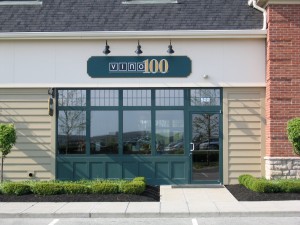
For those of you that have been living under a rock this week and missed my writing debut on CraftBeer.Com, SHAME ON YOU!
I was recently offered the opportunity to write a piece for the “Craft Beer Muse” section on CraftBeer.com. For some time now, craft beer has been fighting for a rightful spot on the table. After all, beer pairs just as well, if not better in some circumstances, than wine. But times, they are a changing.
In my article “A Craft Beer Epiphany In Wine Country,” I share my unique story about a food and beverage experience at one of the world’s most prestigious and award-winning restaurants, The French Laundry — which is located right in the heart of Napa Valley wine country.
“For a few decades now, craft beer has played second fiddle to wine.
But not anymore.
The introduction and popularity of the gastropub concept has revolutionized the way people experience and perceive craft beer and food. Wine is no longer the only fine beverage that has found its rightful place at the dinner table.”
Make sure to check out the entire article on the CraftBeer.com website!
Cheers!
]]>
Friends, prepare yourselves for the most epic party of the year.
On Sunday May 23rd, Mutineer Magazine is hosting its 2nd Annual Red Carpet Tasting Event at Falcon Hollywood in Los Angeles. The guest lists consists of a star-studded roundup of over 350 fine beverage VIPs: including industry celebrities, winemakers, brewers, beverage bloggers, and more.
And have no fear, kids. If you cannot make the actual event, you can follow the debauchery LIVE on the New Brew Thursday UStream. And if that wasn’t cool enough, guess who is co-hosting the Live Show? Yep, that’s right. The Beer Wench. Game on. RSVP for the Ustream HERE.
The Official Twitter hashtage for the Event and the Live Stream is #MutineerLive. Follow all of the updates and buzz surrounding the event on the hagtag stream = #MutineerLive.
The All-Star Mutineer Team on Twitter = @mutineermag + @alankropf + @jdorenbush @beermutineer + @odiedog52 @thebeerwench
Beverage Bloggers who will also be in attendance = @newbrewthursday + @johnholzer + @darthweef + @masterpairings + @thebeerchicks + @beerchicks+ @alexpdavis + @beachbumchris + @estarLA + @HipsterEnology
ABOUT THE EVENT
Mutineer Magazine’s 2nd Annual Red Carpet Tasting Presented by Amarula Cream brings together people, culture, and fine beverage at the renowned Falcon Hollywood for a memorable night of beverage tasting. The event follows up on the success of Mutineer’s first major affair celebrating its national launch last May 2009. A selective sampling of 40+ fine beverage companies from around the world will be sharing the fruits of their labor for attendees to explore. The red carpet event will also raise money and awareness for A Child’s Right, a charitable organization that implements water relief programs for impoverished children in undeveloped countries around the world.
A wide variety of wines, craft beer, spirits, liqueurs, and non-alcoholic libations will be poured as beverage connoisseurs, F&B insiders, journalists, and celebrities experience some of the most sought after beverages that are waiting to be discovered. In addition, the magazine will premiere the “Art of the Mutineer, Volume No. 1” photography exhibition highlighting Mutineer Director of Photography Ian Andreae’s inspiring and stunning photographs that have graced the covers and pages of the publication since its inception.
When:
Sunday, May 23, 2010
7 – 11 PM
Where:
Falcon Hollywood (Map)
7213 Sunset Boulevard
Hollywood, California 90046
Who:
Hosted by Mutineer Editor-in-Chief Alan Kropf and Actor/Comedian Ben Morrison.
The tasting event offers an impressive sampling selection of fine beverages including:
Spirits: Amarula Cream Liqueur, Bluecoat Gin, Combier Rouge Cherry Liqueur, BenRiach Scotch, Briottet Liqueurs, Chinaco Tequila, Don Roberto Tequila served with new cocktail mix “120 Mix”, English Harbour Rum, Kalani Coconut Liqueur, Luxardo Liqueur, Obsello Absinthe, Xtabentun Honey Liqueur
Wine: Brazin Wines, Chatom Vineyards, Continuum Estate, Jordan Winery, King Estate Winery, La Jota Vineyards, Murphy-Goode Winery, Newsome-Harlow Winery, Tanner Vineyards, Twisted Oak Winery, Two Oceans Wines, Wente Vineyards, Zucca Mountain Vineyards
Beer: Artisanal Imports, Ballast Point Brewery, Chimay, Coronado Brewing Co., Deschutes, Fireman’s Brew,Firestone Walker, Karl Strauss Brewing Co., Lost Coast Brewery, San Diego Brewing Co., Sierra Nevada Brewing Co., Stone Brewing Co.
Non-Alcoholic Beverages: Dragon Pearl Tea, Hot Lips Soda, SanTasti, Waiwera Artesian Water
Cheese provided by Barrie Lynn – The Cheese Impresario.
Ustream Broadcast by New Brew Thursday.
Music by Seattle Musician Hunter Lea.
]]>
Thus far, the response to Project NO MAN’S LAND has been extremely positive.
Which means, we have a green light to continue forward.
There is no real method in my madness when it comes to the order in which I am presenting my linear pairings. Ultimately, it all depends on my mood and what varietal and style I feel most inclined to write about at that particular moment.

My recent preoccupation with Asian and Thai foods has put me on a mission to find their perfect beverage counterparts. Gewürztraminer is often hailed as one of the few wines suitable for drinking with Asian cuisine. After some brainstorming, research and help from a friend — I decided that the Belgian Witbier was a sufficient linear pairing for the Gewürztraminer.
And this is why …
THE VARIETAL: Gewürztraminer
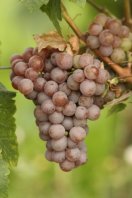
The name Gewürztraminer originated in Alsace, France and literally translates to “Perfumed Traminer.” The varietal belongs to the “Traminer” family, which is often referred to as a family of clones. This is where half of its name comes from. The other half of its name – “GEWURTZ” – refers to its aromatic & spicy nature.
The history of the Gewürztraminer is complicated and rather confusing (if I do say so myself). Although its name is German, its roots are Italian. It is a mutation and distant relative of the ancient Traminer varietal, a green-skinned grape that originated in the northeastern region of Alto Adige, Italy.

At some point, the Traminer varietal mutated into dark pinkish-brown, spotted berries. It most likely under went a musqué (‘muscat-like’) mutation, which ultimately led to the extra-aromatic Gewürztraminer varietal. Like the Pinot Noir grape, the Gewürztraminer is a very fussy and obnoxious varietal. In order to produce great wine, it demands a very particular soil and climate.

Depending on the fruit ripeness, the dark pink color of the Gewürztraminer grape produces wines that are light to dark golden-yellow in color with a slightly copper tone. For a white wine, Gewürztraminer is as full-bodied as they come (but not necessarily as full-bodied as most reds). It is infamous for its strong, heady and perfumed aroma and its exotic lychee-nut flavor.

In Europe the grape is grown in Italy, France, Austria, Bulgaria, Croatia, Hungary, Luxembourg, Moravia in the Czech Republic and Slovakia. In the New World, the grape is perhaps most successful in New Zealand and in the far south of Chile but is also produced in several regions throughout the United States.
The best wines produced from this varietal are, by far, from the Alsace region of France. “Classic renditions of this grape have the aroma of banana when young and only develop a real pungency of spice in bottle, eventually achieving a rich gingerbread character when mature.” -Sotheby’s Wine Encyclopedia.
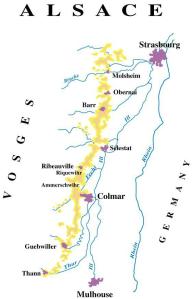
Because of its overly potent and spicy nature, the Gewürztraminer varietal is one of the only wines commonly paired with Asian food (especially spicy). It is also an excellent match for cheese (both soft and strong/aged), Chinese food, cinnamon, curry, duck, fruit (definitely tropical), ginger, ham, Indian food, sausage, smoked food, spicy food & Thai food.

Enough about the wine … let’s talk about the beer now, eh?
THE STYLE: Witbier

Witbier, called “Biere Blanche” in French, is the Flemish word for wheat beer. It was once the dominant style in the area east of Brussels. Specifically, it originated in the village of Hoegarten in the city of Louvain.
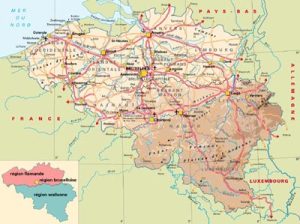
As a result of its relatively high protein content, this style of beer is typically extremely hazy. Although the name suggests that the beer is made solely from wheat, it is actually produced with at least 50% malted barley. As with most styles of beer, the Witbier recipe varies with brewer preference. Traditional recipes use around 54% malted barley, 41% unmalted wheat and 5% unmalted oats.

The Witbier style is always spiced, typically with coriander and the peels of both sweet and bitter oranges. Brewers frequently use at least one additional “secret spice” — known only to the brewer and the brewer’s “herb merchant”. The element of spice in Witbiers is the main factor that differentiates it from most other styles of wheat beers as well as one of the primary reasons why I think that the Witbier style of beer makes an ideal linear pairing for the Gewürztraminer varietal of wine.

Witbiers are traditionally produced with two entirely different types of orange — sweet & bitter. The sweet orange, available as dried peelings, is no different from the standard grocery store orange. The bitter, or Curacao orange, is very accessible in Europe — yet difficult to find in North America.

In addition to being “spicy”, Witbiers tend to be slightly sour due to the presence of lactic acid. They are very VERY lightly hopped (usually less than 20 IBUs – International Bittering Units). Other typical, yet less noted, descriptors include banana and clove (the typical aromas yielded by Belgian yeast).

The Belgian Witbier is very similar to the Gewürztraminer in that it also pairs exceptionally well with Asian food as well as Indian food, Thai food, curry, pork and many cheeses. Both are notorious for being “spicy” beverages and both are commonly paired with spicy dishes. In addition to sharing “spicy” qualities, both are similar in body, texture and mouthfeel (and at times, even color).
As with the previous pairing, I would love to hear feedback on this post. Hit … or miss?
Cheers!
]]>
The marks my first “official” post in Project No Man’s Land. The project will consist of a series of posts illustrating linear pairings between wine varietals and beer styles. Naturally, this project is entirely subjective and has absolutely no scientific foundation. Nonetheless, I have a lot of confidence in its purpose and I am tremendously excited about starting this venture – regardless of the results.
Perhaps after this project I will no longer be known as The Beer Wench, but as The Beer & Wine Yenta … (matchmaker matchmaker, make me a match … find me a find … catch me a catch). But I digress, let us move on to the first pairing.
SAUVIGNON BLANC & INDIA PALE ALE
Now there is some method in my madness in picking this as the first pairing. First off, the Sauvignon Blanc varietal is nostalgic for me. When I was 16 years old, I went to France. (Quand j’avais seize anees, je suis allee au France.) My first winery tour and wine tasting experience was in the Loire Valley, France. And consequently, my first “real” sip of wine was a Sauvignon Blanc.

And this brings me to the India Pale Ale. Anyone who has ever interacted with me at some point, whether it be in real life or through the internet, knows that The Wench is an ale girl. Whereas I do experiment from time to time with different styles of lager, I prefer to stay where I am familiar - in the land of ales. It is only natural for me to begin my project with an ale . But not just any ale, folks. We are skipping the foreplay and diving right into the “king of hops” – the IPA. And you will see why, soon enough.
Now let’s get to the nitty gritty.
THE VARIETAL: Sauvignon Blanc
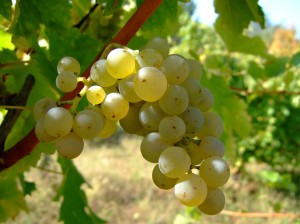
First, let us try to pronounce it: SOH-vihn-yohn BLAHN … SOH-vee-nyawn BLAHNGK. Good job.
The Sauvignon Blanc varietal first originated in the Bordeaux region of France, but it is now grown in just about every major wine making region in the world. Wines made from 100% Sauvignon Blanc are typically fermented in stainless steel and almost never touch oak. Because of this factor, it was one of the first fine wines to be bottled with a screwcap in commercial quantities.

Although its aroma and flavor profiles change with region and climate, the Sauvignon Blanc varietal is most commonly described as being dry, crisp, herbacious and acidic. Most Sauvignon Blancs are categorized as being either “herbaceous” (grassy) or “tropical” (citrusy). Other flavor and aroma descriptors include green & red peppers, flint, asparagus, gooseberry and even cat piss. These wines are typically light to medium in body, with moderate alcohol content.

Since it does not particularly benefit from aging, wine made from Sauvignon Blanc is usually consumed young. As with most things in life, though, there are “exceptions to the rule”. Oak-aged Sauvignon Blancs from the Pessac-Leognan and Graves regions in Bordeaux can be aged up to fifteen years.
Sauvignon Blancs pair very well with fresh seafood/shellfish/white fish/salmon (esp poached or lightly grilled), sushi, chevre (goat cheese), tart & herbacious cheeses, chicken (fried/roasted/sauteed), pork, curry, Thai food, Tex-mex food, salsa and vegetables (especially green and grilled).
THE STYLE: India Pale Ale

The origin of the IPA is greatly debated. But I am a story-teller by nature and, regardless of what the truth may be, the “creation myth” of the IPA is one of my favorite tales to tell.
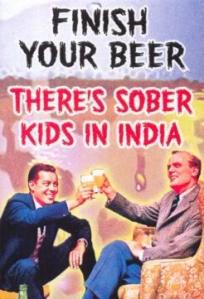
Once upon a time, the crazy Brits decided that colonizing the country of India was an awesome idea. However, this was before planes, trains & automobiles. The fastest and most efficient way to get from England to India was to sail around the continent of Africa.

Obviously, this was not a short trip. Africa is a pretty damn big continent. Many consumable goods (including beer) could not survive the long voyage. In order to prevent the beer from spoiling during the trip, the traditional Pale Ale recipe needed to be tweaked. Beer already naturally contains 2 different preservation agents – hops & alcohol. Increase these elements and you get a recipe for success.
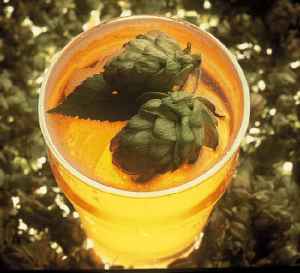
As legend goes, Hogdson was the most popular brewer during this time and has been credited as the creator of the original IPA. In order to ensure his ale weathered the journey to India, Hogdson made three crucial changes in his brewing methods. Hogdson increased the hopping rate, exaggerated the level of alcohol and used an abundant dry hopping process.
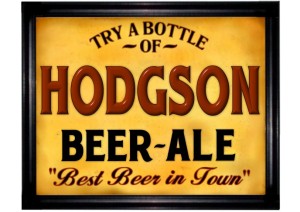
So I know what you are thinking – great story Wenchie, but what the heck does this have to do with the Sauvignon Blanc. And the answer is … absolutely nothing. I don’t even know if the story is accurate. I just like to tell stories.
Time to get down to business. In my opinion, Sauvignon Blanc’s beer equivalent is the IPA. Why? Both are medium-bodied, dry, crisp, herbacious and acidic. As with Sauvignon Blanc, the IPA style changes based on where it is produced. English IPAs are like Old World Sauvignon Blancs – softer and more balanced. American IPAs are like New Zealand Sauvignon Blancs – sharp and grassy with heavy notes of citrus.
Just as the Sauvignon Blanc varietal has exceptions, so does the IPA. There are a few interpretations of the IPA style with a higher malt content, which makes them similar to the oaked versions of the Sauvignon Blanc (I hope this makes sense). BUT – for the most part, the Sauvignon Blanc varietal and the India Pale Ale style are BOTH primarily known for dominant grass and citrus characteristics.

In addition to possesing very similar aroma and flavor profiles, India Pale Ales and Sauvignon Blancs pair well with many of the same foods. These include cheese, chicken, pork, salmon, seafood, curry, Thai food, Tex-Mex food, and salsa.
Since they can be sharp and astringent on the palate, both of these beverages tend be an “aquired taste”. I have an affinity for acidity, astringency and bitterness. As a result, the Sauvy B varietal and the IPA style happen to be two of my favorite beverages to drink. In my eyes, they possess similar qualities which make them almost interchangeable. I could easily drink an IPA under the same conditions as I would a Sauvignon Blanc. Hence my choice to make them a linear pairing.

And what do you think?
Is this a hit or miss?
]]>
It is official. I have decided to journey into territory that only a few have entered — and even fewer have survived.

I am trespassing into NO MAN’S LAND. And instead of wearing camouflage and hiding in the bushes, I will be parading myself in bright neon colors and flashy sequins.

Now. I know you must have some questions for me like … 1. Where is no man’s land 2. Why am I going there & 3. Why I am drawing so much attention to myself for doing so (the bright colors and flashy sequins thing)?
Depending on how long you have been following my blog and whether or not you know me as a person (in real life or on Twitter), you might be aware that in addition to being a beer connoisseur — I am also a wine geek. In fact, I am a professional of both. (Essentially, I am a slave of the restaurant industry — and my source of income greatly depends on my ability to sell wine, beer & food. Luckily, I am ridiculously passionate and very well educated about these topics.)

The truth is, my love for beer stemmed from my love for wine. And my love for wine stemmed from my love for food. Naturally, most people love food. Food is one of the most important things in life. Without food, life would cease to exist. Some people eat to sustain themselves and find virtually no passion in food. I pity these people. Food not only provides my body with the nourishment it needs, it feeds my mind, body and soul.

I have been a nerd since birth. And I have always been driven to self-educate. My parents can attest to this fact. It has always been my personal goal to become an “expert” in anything and everything that interests me. True, this goal can be very daunting. Nonetheless, I suffer from what I call “Peter Pan” syndrome and truly believe that I can do anything I put my mind to (I can fly! I can fly! I can fly!) …

After I graduated college, I became lost and confused. I didn’t know where I wanted to go or what I wanted to do with my life. I loved studying psychologoy and criminology, but I had no desire to go into professions in either field. Like most college graduates, I went through a BIG period of “soul-searching” and experimentation.
I also started cooking.
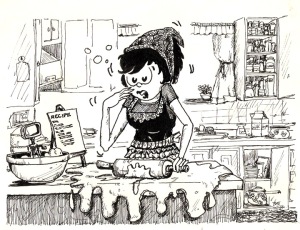
But not the type of cooking I had been doing since I was a kid … I started really cooking. And that’s when I started studying wine. I decided rather quickly that I wanted to receive Sommelier certification and the first book I picked up was “Sotheby’s Wine Encyclopedia.” My new found passion for food & wine led to a series of jobs in both wine retail and the restaurant industry.
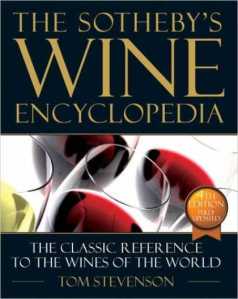
The biggest break through for me was becoming a “Managing Partner” at a restaurant called The Northstar Cafe in Columbus, OH.
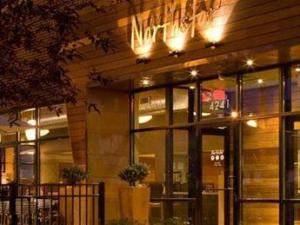
Although I had no prior restaurant management experience, the owners of the restaurant saw something in me that made them overlook this factor and take the gamble and hire me. I am forever indebted to them for this. (One of the owners, Kevin Malhame, is featured in the picture below).

After I completed management training (which included working every single position in the restaurant – from dishwasher to line cook to front of the house), I was given responsibility and control over all things beverage. This included beer – and not just any beer. The Northstar Cafe only sells craft beer. I knew very little about craft beer when I start, but like a good student I did my homework. And the rest is history. Well, sort of.

I won’t go any further into the choices that I’ve made since then that have brought me to where I am today (we will save that for my book, eh?). The point of this blog is to illustrate my love and passion for as well as my knowledge and experience with both beer and wine. This way my audience will better understand what I am about to do with both.
Which brings us back to NO MAN’S LAND.

My newest project is absolutely brilliant (in my opinion). The idea was inspired by a request I received from a friend in the wine industry to write an article for his blog recommending beers to wine drinkers. This got my thinking about the linear relationship between wine and beer. There are several commonalities between beer and wine — they are both described in terms of aroma, mouth-feel, body, taste, finish, etc.

Whereas wine is most commonly classified by varietal (in the U.S.), beer is categorized by style. There are many similar parallels between both classification systems. The characteristics of a single varietal of grape can changed based upon the region and area in the world in which it is grown. Similarly, there are multiple interpretations of each style of beer depending on where its produced and the ingredients being used.

My goal is to use my knowledge and experience to connect these two types of alcoholic beverages. I want to create linear pairings between styles of beer and varietals of wine. (This is either pure brilliance or pure madness). Yes, I know that I am trekking into dangerous territory by taking on such a challenge. However, I have reached a stage in my studies that has alluded me into thinking that this goal is in fact achievable and that I am in fact the man (the wench) for the job.

There will be haters, naturally. But this does not scare me.
And so … project enter NO MAN’S LAND begins. There is no turning back now!
Cheers!!!
]]>
THANK YOU for your generous offer of blogspace and inviting me to provide content regarding Vino 100. (It’s a copywriter/marketer’s dream come true!)
How this all came about is kindof a fluke. I had been a copywriter forever (almost 20 years), but I’m also a research geek (have a Masters degree in Library and Information Science — because I love finding and sharing information.) In August, 2006, I was at Ten United (now Engauge), working on an ad for one of our bank clients. The ad happened to be a profile of one of the bank’s small business customers — a beer and wine wholesaler — located in Traverse City, Michigan. So I’m doing some background research, looking through all these online articles in the beer and wine trade journals, when I stumble across a description of Vino 100 — a wine store franchise with a really unique concept.
Now, I certainly had not been looking to open a retail business, and while I’ve always been into food and wine, I wouldn’t really call myself an “expert.” But after so much time in the advertising world, I knew a good, consumer-centric idea when I saw one. So I decided to check it out.
One protracted lease negotiation, lots of training, and many (15ish) months later, I, along with my husband and a friend of ours, opened the Vino 100 store at Polaris Parkway and Cleveland Avenue.
Our mission is basically to make good wine accessible to everyone, regardless of income, background, or level of wine knowledge. We carry 100 wines all priced at $25 or less, and each one has a “barometer” (point-of-sale tag) indicating its flavor (fruity to dry) and body (light to full). The store is arranged not by grape varietal or country, but rather by taste — all the reds on one wall, progressing from lighter to heavier bodied; all the whites on another wall, progressing from lighter to heavier bodied. Once you find a wine you like, you can use that flavor and body profile to find others that match your taste.
Speaking of tastes, we do winetasting every day (we have at least 8, and usually 12 different wines open) to orient customers to the barometer system and help them start to figure out their own palate. We also host instructional events, private events, even off-site events (“Wherever Winetastings”) — all to help people learn about wine and–most important–learn what they like.
Because I’ve always viewed wine drinking as a very social activity, I wanted Vino 100 Polaris to be a “gathering place.” We have seating for 24 (plus another 8 on barstools), and we serve wine by the glass, along with gourmet cheese plates and a Mediterranean plate (hummus, couscous, and eggplant). For the summer, we started offering 5 o’clock flights — every Monday from 5 till 8, we feature a flight based on a particular theme. So far, we’ve had the Tour de Blancs (Sauvignon Blancs from New Zealand, Chile and the Loire), and Italian Oddities (a Nero d’Avola, a Rosso blend, and an Aglianico).
I would love to show you around the place — and have you taste some of our great wines. We have private events scheduled for June 3 and June 11, but other than that, Tuesdays and Wednesdays are usually pretty slow. If there’s a certain day/time that’s convenient for you, I can make sure I’m around. (Our store manager, Jim, is there all the time. I’m sometimes off-site, trying to work on marketing and content for our events.) We’re open 11 – 8 Monday through Thursday, 11 – 9 Friday and Saturday. Closed Sunday.
By the way, if you have any books you’d like to get rid of — and want to pick up some good summer reading in return — we’re having a book swap at the store this Saturday. Details are on our website calendar.
Our website: www.vino100polaris.com
Other contact info: phone: 614.895.VINO; email: [email protected]
I’m also attaching a couple of photos of the store — in case you wanted to post them.
Looking forward to meeting you in person.
And thanks again — in advance — for spreading the word.
Cheers!Liz Avera





